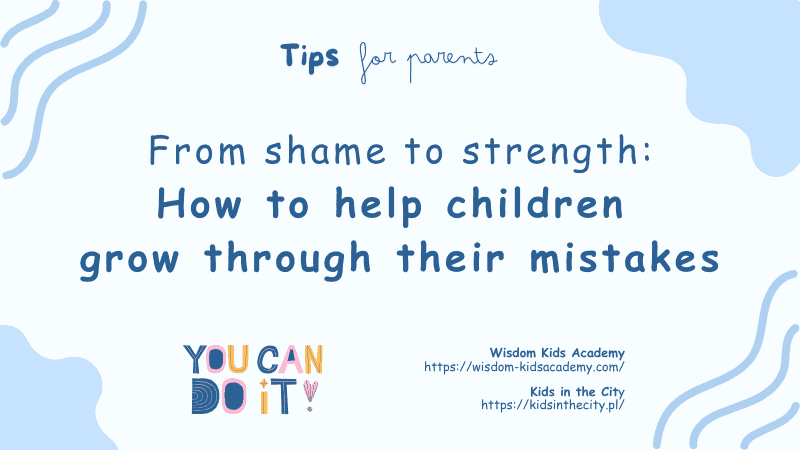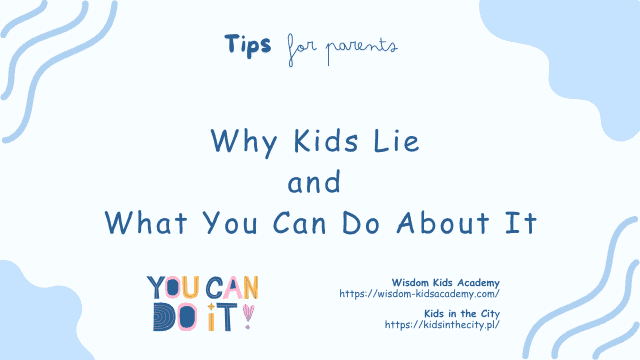Limor Jasinski, a Mindset Coach for Kids and Teens based in Warsaw, the founder of Wisdom Kids Academy, on how to set boundaries that work
As our children grow beyond the early elementary years, the challenge of setting appropriate boundaries evolves. Children aged eight and up are developing greater independence, testing limits, and forming their identities. This crucial stage requires thoughtful boundary-setting that balances protection with growing autonomy. Here’s how to create boundaries that benefit both you and your child.
“Why do I have to clean my room? It’s my space!”
“But everyone else gets to stay up late!“
Sound familiar? These boundary-testing moments happen in every household, in mine for sure, but with the right approach, they become opportunities rather than battles.
So, how do we set boundaries that actually work? Let’s dive in.
Why Boundaries Matter Now More Than Ever?
Boundaries aren’t just about rules. They’re the invisible framework that helps children feel secure even as their world expands. When children understand what’s expected, they experience less anxiety and develop greater self-regulation. A child who knows the clear limits around screen time, for instance, gradually learns to monitor their own usage instead of fighting the same battle daily.
Dr. Henry Cloud, co-author of “Boundaries with Kids”, explains that boundaries teach children that their choices have consequences—a fundamental life lesson that serves them well into adulthood. Children struggle to develop the internal controls needed to thrive without these protective limits.
Age-Appropriate Boundaries for Growing Independence
The boundary needs of an 8-year-old differ significantly from those of a 12-year-old. Consider these developmentally appropriate examples:
For ages 8-10:
- Technology limits (1-2 hours daily of recreational screen time):
“You can have your tablet time after homework and chores are done, with a timer set for 1 hour.” - Homework completion before play:
“First homework, then Minecraft—let’s put your assignment folder on the kitchen table so we know when you’re finished.” - Basic responsibilities like making beds and clearing dishes:
“Your morning checklist includes making your bed and putting your breakfast dishes in the dishwasher before school.” - Respectful communication (no name-calling or rude responses):
“In our family, we speak respectfully even when upset. Try saying ‘I’m frustrated’ instead of yelling.”
For ages 11+:
- Social media restrictions:
“You can use Instagram for 30 minutes daily after homework, with privacy settings we’ve reviewed together and your account remaining private.” - Earning Independence:
“Since you’ve shown you can manage your homework schedule for three weeks, you can now decide when to complete it each day—as long as it’s done before 8 PM.” - Self-Management Skills:
“I’m not going to remind you about assignments anymore. Let’s try using your planner system, and we’ll review how it’s working in two weeks.” - Out-of-Home Safety Rules:
“When at your friend’s house, you need to text if plans change and be home by 8 PM on school nights.”
The Art of Boundary Communication
How we communicate boundaries dramatically affects whether children accept or resist them. Instead of simply imposing rules, try:
- Explaining the reasoning behind boundaries:
“We limit screen time because your developing brain needs different kinds of stimulation and rest.” - Using collaborative language when possible:
“Let’s figure out when you’ll complete your homework today.” - Being specific and clear:
“Home by 7:30 PM” works better than “Don’t be late.”
Remember that even when children disagree with boundaries, they benefit from understanding the caring intention behind them.
Consistency: The Make-or-Break Element
Children quickly learn which boundaries are firm and which can be negotiated through persistence. When you establish a boundary, be prepared to uphold it consistently. This doesn’t mean being rigid—it means following through with appropriate consequences when boundaries are crossed.
Natural or logical consequences work best: losing device privileges when technology rules are broken or having to complete chores before joining weekend activities if responsibilities are neglected. These teach cause-and-effect relationships rather than random punishment.
This consistency is also how children develop integrity—the inner strength to do what’s right even when no one is watching. When children experience predictable outcomes from their choices time after time, they begin to understand that rules exist for good reasons, not just because adults say so.
Modeling: Your Secret Weapon
Children learn boundary-setting more from what we do than what we say. When you demonstrate healthy personal boundaries—like declining commitments when overwhelmed, requesting respectful communication, or taking needed personal time—you’re providing powerful real-life lessons.
Equally important is respecting your child’s appropriate boundaries. Knocking before entering their room, asking permission before sharing their stories with others, and honoring their feelings teach that boundaries work in both directions.
Finding the Balance
Effective boundaries exist alongside warmth and connection. Research consistently shows that children thrive with both structure and nurturing—not one at the expense of the other. Make sure to create plenty of “yes spaces” where your child can make choices freely within broader boundaries. These might include:
- A designated drawer where they can keep personal items without parental interference.
- Freedom to arrange and decorate their room (within reasonable safety and cleanliness standards).
- Choosing their own clothes from weather-appropriate options.
- Deciding how to spend their allowance (aside from a portion for savings).
- Selecting their free-time activities on weekends after responsibilities are met.
Remember that boundaries aren’t about control but about guiding your child toward becoming a responsible, self-regulating individual. When approached with clarity, consistency, and compassion, boundaries become not a source of conflict but a foundation for your child’s growing confidence and capability.
“Because she’s learned to do them on her own.” “How did she learn that?” “The same way you’re learning now – practice clear expectations and seeing how good it feels to be trusted with more freedom.”
This is integrity in action, “doing what’s right because it matters, not because someone’s watching.” It begins with those external boundaries we set, but it becomes who our children are over time.
About the Author
Limor Jasinski – the founder of Wisdom Kids Academy in Poland, and a fervent advocate for children’s development. A Tel Aviv native, Limor’s journey in nurturing young minds began early in her career when she worked as a caretaker for children, revealing her innate connection with them. This connection sparked a lifelong passion that led her across continents, from the welcoming communities of Canada to the enchanting landscapes of Poland and Warsaw.
Limor holds over a decade of experience in coaching, starting with her certification from TUT Coaching College and followed by advanced training at the Robbins-Madanes Training program in the U.S. She further honed her skills by earning a Practitioner of Excellence certificate from The Strategic Intervention Coaching Institute and becoming a certified Wisdom life coach for kids through Adventures in Wisdom.
At Wisdom Kids Academy, Limor uses the WISDOM System for Coaching Kids™, a part of the Adventures in Wisdom™ Curriculum. This innovative program, which includes 27 specially designed books, has been adopted by life coaches in over 30 countries to develop personal growth and leadership skills in children and teens. Limor’s curriculum focuses on essential life skills like resilience, self-esteem, and overcoming fears through compelling storytelling, enabling kids to confidently face life’s challenges.
Limor takes pride in her role as a coach, inspiring greatness and encouraging each child to dream big and develop a robust mindset for overcoming any obstacle. Under her guidance, children at Wisdom Kids Academy embark on a transformative journey of growth and discovery, unlocking their potential and achieving their goals with confidence and excitement. Connect with Limor: limor@wisdom-kidsacademy.com, Instagram, Facebook. Wisdom Kids Academy’s website in English.
Wisdom Kids Academy’s services
Explore our full range of offerings and real-life success stories on our website: wisdom-kidsacademy.com. Interested in personalized coaching or engaging workshops for schools and parents? We cover various topics of growth mindset, such as Strengthening Self-Confidence and Making Good Decisions. How do you instill values and self-responsibility at home? Visit us to learn more and share your experiences. Together, let’s enrich our parenting skills and empower our children for a brighter future!

















